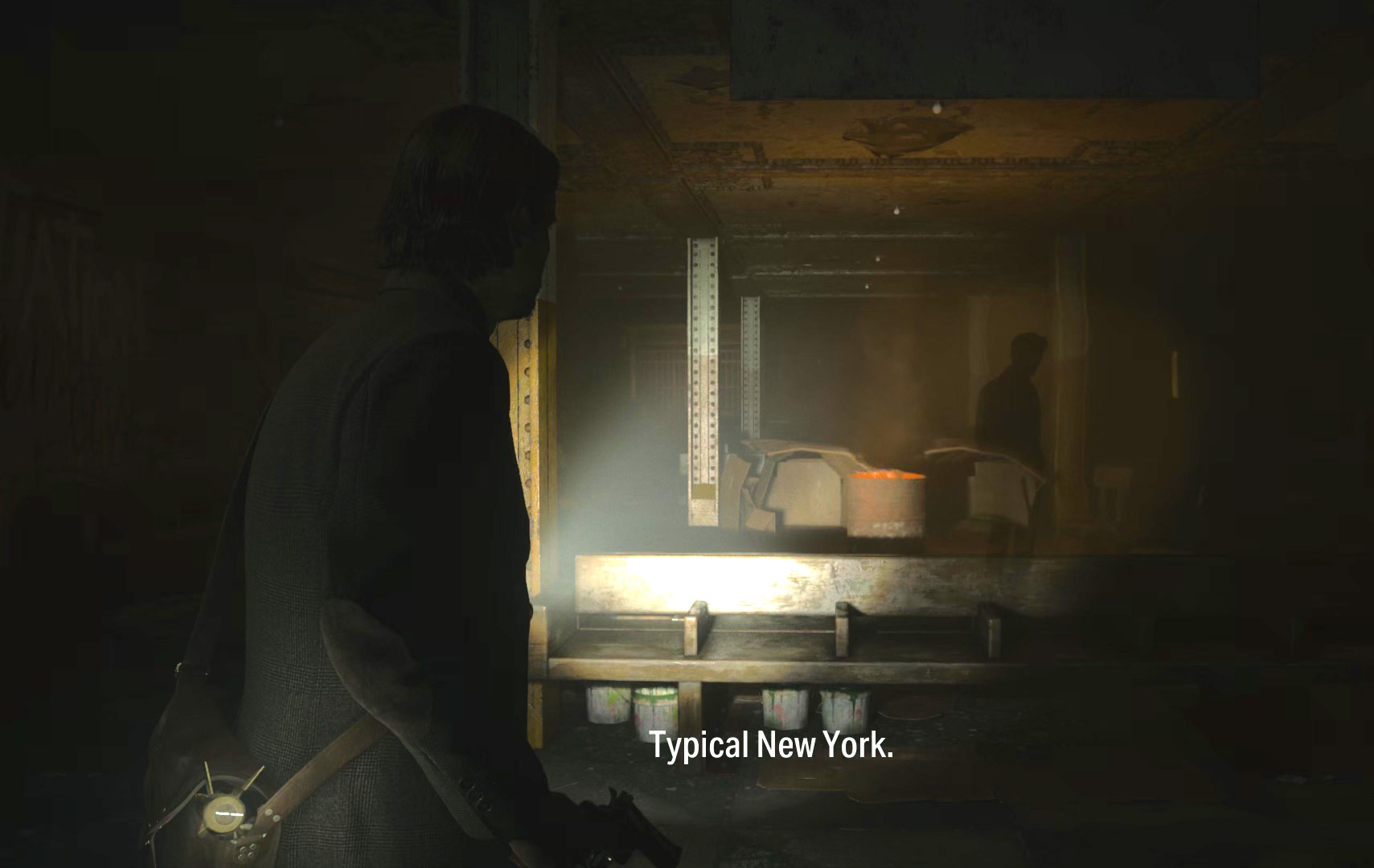
Alan Wake can’t find the subway. I’m making him wander oil spilled streets in the new video game Alan Wake II, Remedy Entertainment’s hallucinatory sequel to 2010 survival horror Alan Wake, getting distracted by how well I recognize his miserable surroundings. It’s a nightmarish sketch of New York City—smudged with rain clouds, an eye mobbed by mascara tears—but it’s familiar. I’ve grown up with New York, and, like Alan, I can see that it’s only getting more hollow.
In the game, curse-touched protagonist Alan needs to write himself out of the Dark Place where he’s trapped, but when he creates his hometown New York, it's populated almost exclusively with blurry shadow people. Sometimes, they appear out of thin air at a talk show, laughing with more force than usual. Usually, they amble toward you like they smell blood, like you’re a daisy and they’re the lawnmower, until you burn through them with light from Alan’s angel-shaped lamp.
Stopping only occasionally to pay subway fare, talk to an unhelpful cop, or admire the game’s stacks of black trash bags, I guide Alan through crowds of these insubstantial people and I think, God, this guy gets it. I remember, as a kid in Queens, playing with my neighbor’s dog and talking to shop owners on Main Street about the rhinestone headbands they had on display. Getting offered a hot dog for free. Those were the few years where the city felt full of possibility to me, and I’d look up at changing leaves in Central Park imagining that, one day, I’d afford an apartment as high up as they are.
There were fewer shadows then. Now, I notice new selfishness, more affluent residents acting like all their neighbors are ghosts. I watch them walk over community gardens, leave empty beer cans on freshly-painted benches, and stumble through the Lower East Side after Sunday brunch, ignoring every ask for a dollar, or a few cents.
Even so, my childhood was nowhere near perfect, and I know I’m following tradition by complaining—people cry about the city changing every 20 years.
In the 1970s, the local economy tanked and half the city’s vacant wood-frame buildings were on fire , but at least, some people said , New York had a more delicious soul than it did in the 90s, when Sex and the City replaced dirty cobblestones in the West Village with Balthazar baguettes. Things changed again, and 9/11 paranoia proved the depth of New Yorkers’ self-congratulatory resilience . But some think the ‘00s were a more noble case of us-versus-them than what we have in the 2020s, Bushwick skaters who chase you out of the park for not wearing Heaven by Marc Jacobs.
But I’m not holding onto nostalgia. Alan doesn’t, either. His lurid fearscape has no allegiance to a particular New York era—it looks like time has converged into a diamond ring. I notice 50s-style movie theater ads, fussy subway graffiti like it's the 80s, and modern, neon green declarations of your deepest anxiety: NOT IN SERVICE.
Real New York history combines to form a single image, too. The city can be filled with Dutch fur traders and diphtheria in 1664, the year it was renamed , or TikTok dummies and vape cartridges in 2023. Either way, it’s an island of transplants, pollution, and periodic clusters of love. But I know for a fact that some things are getting worse.
The fat chasm that exists between the city’s wealthiest residents and the rest of us is stretching wider. Manhattan rent reached a record high of $5,588 a month this year, though studies determine that 50 percent of New York families can’t afford to pay it, eat food, and otherwise stay alive. 2022 research shows that five percent of Manhattan residents annually bring in $545,549 as a household, whereas 20 percent of the city expects to earn just $10,259. And, with this in mind, I guess I am annoyed about all the Marc Jacobs I see in Bushwick, a neighborhood split like a sundae—some of it goes to immigrant families trying to get by, some of it goes to white kids who moved here last summer.

Alan’s psychic terror is, in that way, relatable. Unlike Alan, I’ve never explicitly been hunted by an intangible, ungodly presence and forced to navigate New York alone, but, sometimes, it feels like Eric Adams is trying to do that to me. Scenes Alan writes where subway terminals are spackled in blood and murder cult paraphernalia aren’t obvious parallels to Dimes Square , but, if I imagine Alan’s dad works at a hedge fund and buys him little Prada bags, I see it.
It’s cathartic to see Alan Wake II make my hometown as depraved and disappointing as it now exists in my mind. But his lamp weapon is a useful reminder, too. As vacuous as New York City can be, I know that in supporting its nature, my friends, and community, I can grab hold of its light.
Subscribe